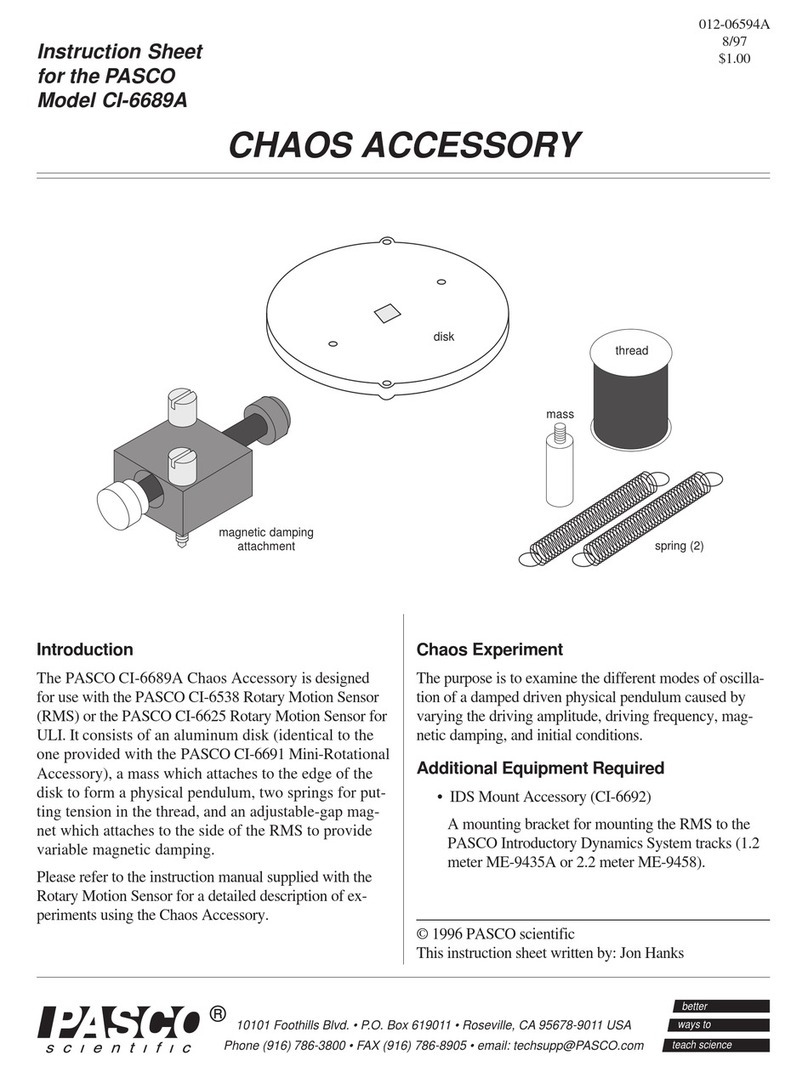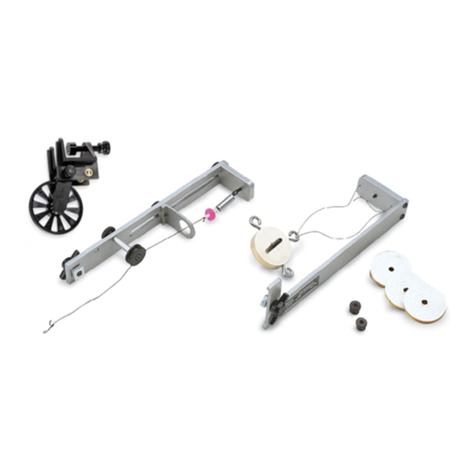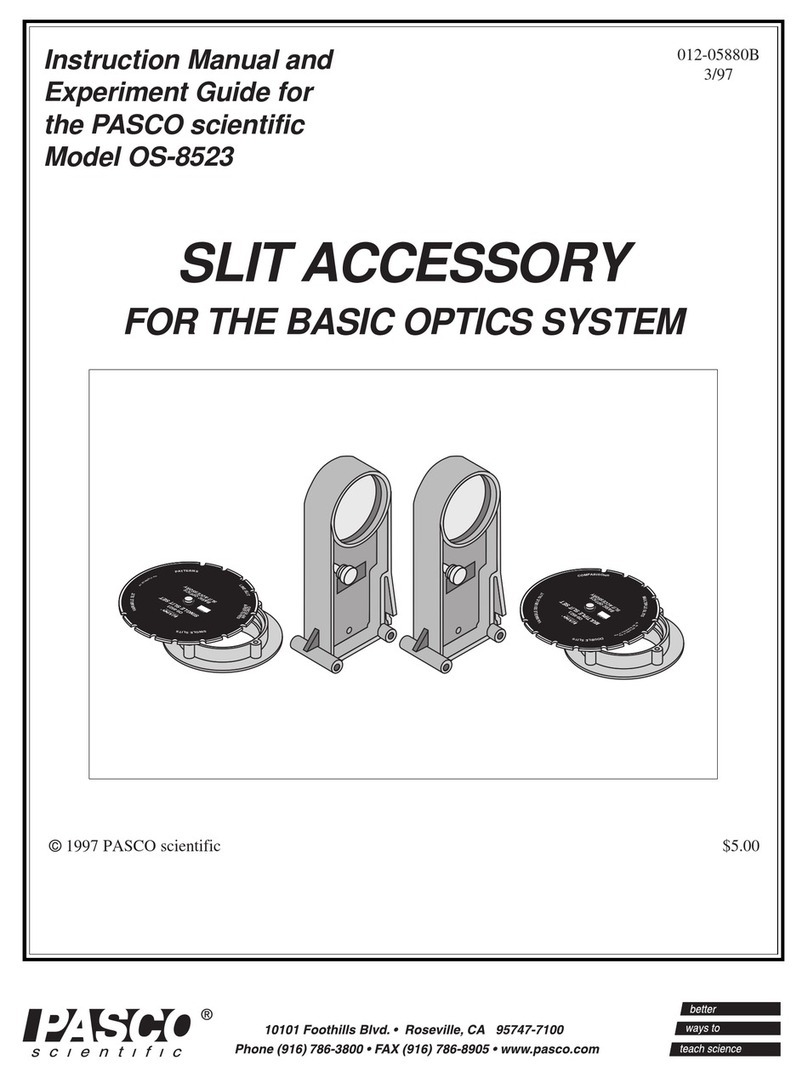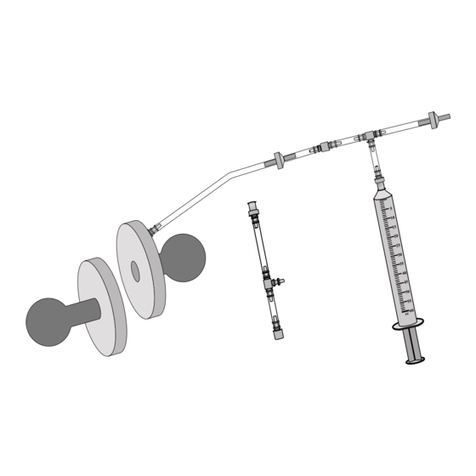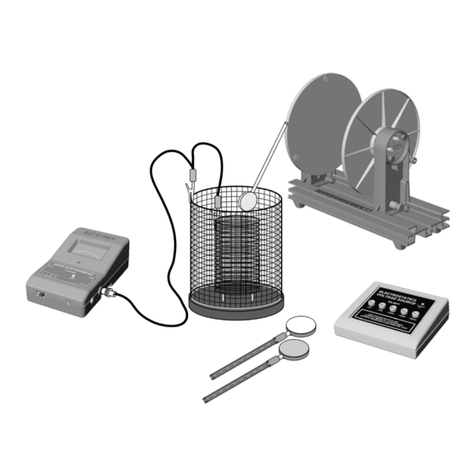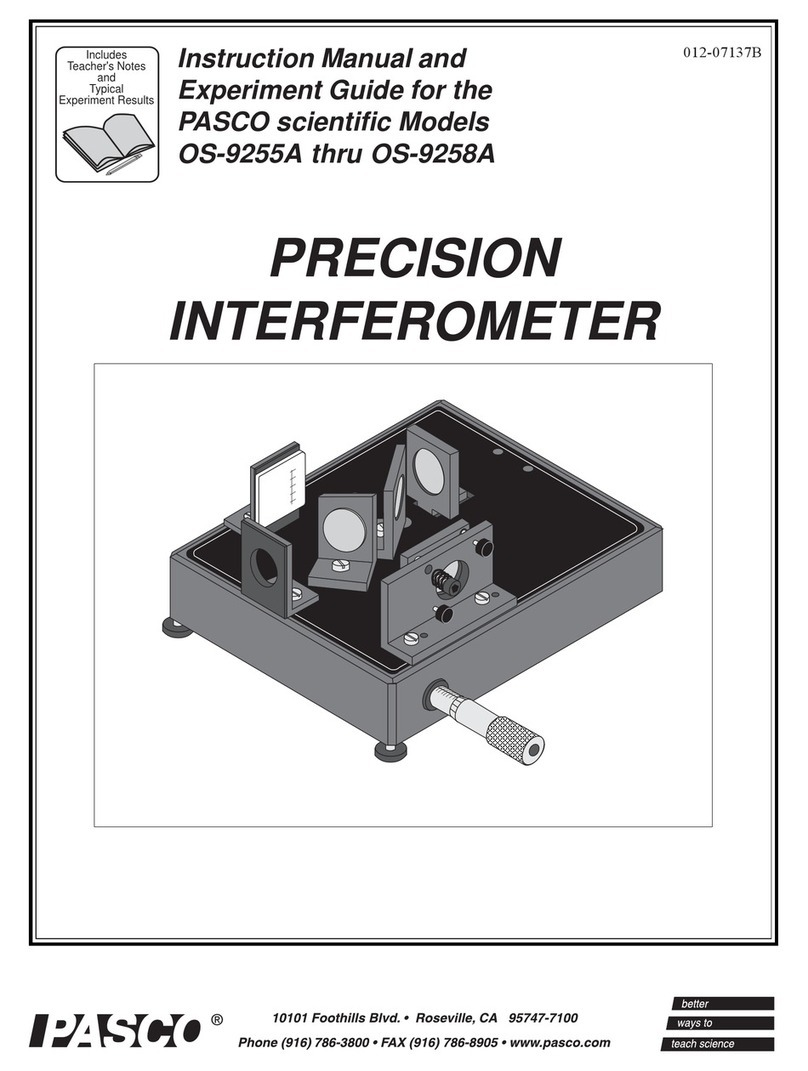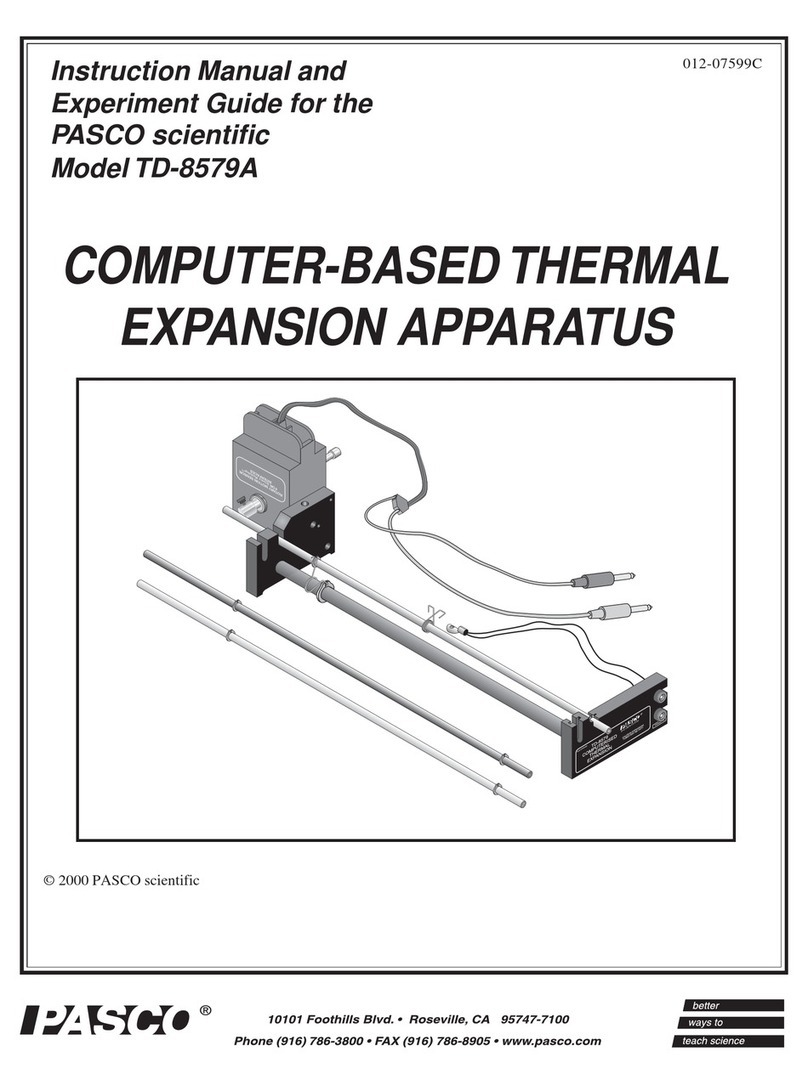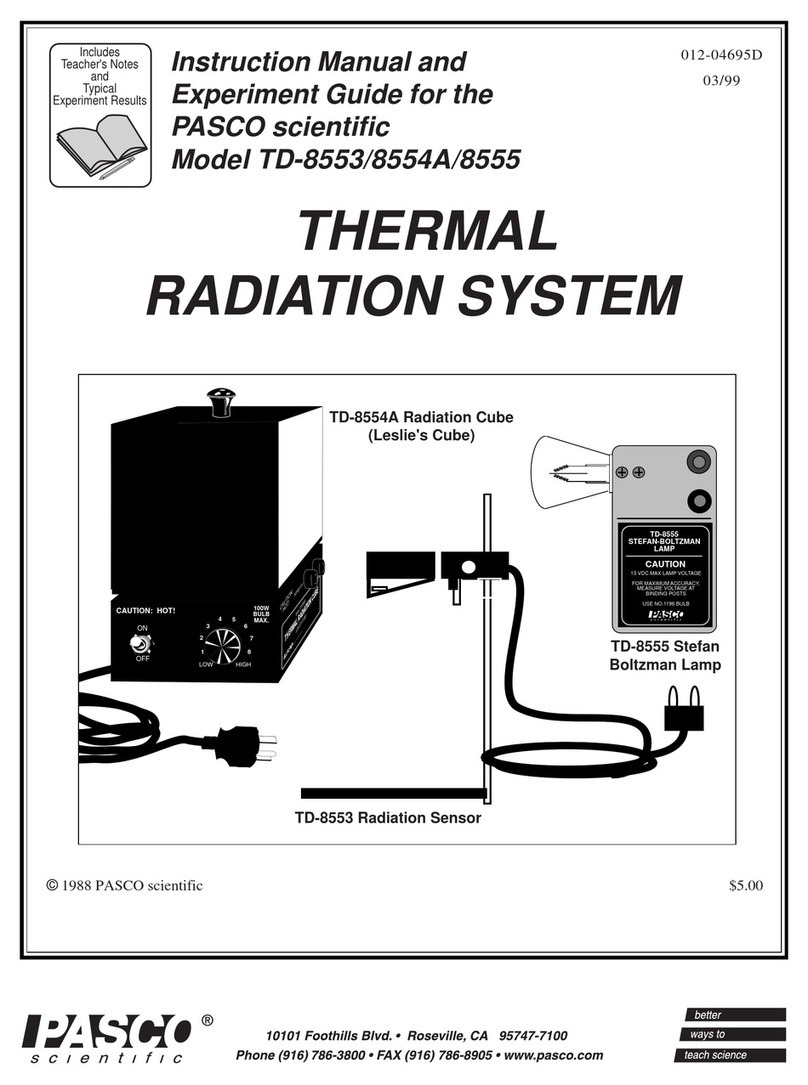
012-07114D Thermal Expansion Apparatus
1
Introduction
Introduction
The PASCO Model TD-8578 Thermal Expansion
Apparatus provides easy and accurate measurements
of the coefficient of linear expansion for brass, copper,
and aluminum.
To make the measurement, the brass, copper, or
aluminum tube is placed on the expansion base. The
length of the tube is measured at room temperature,
then steam is passed through it. The expansion of the
metal is measured with 0.01 mm resolution using the
built-in dial-gauge. Temperatures are measured to
within 0.2 °C using a thermistor attached to the center
of the tube. If you wish to investigate the expansion
of the metals at additional temperatures, hot or cold
water can be passed through the tubes.
Complete step by step instructions and a data sheet for
results are provided on the following pages.
Equipment
Your TD-8578 Thermal Expansion Apparatus in-
cludes:
• A 40 cm long expansion base with a built-in dial
gauge and thermistor.
➤➤
➤➤
➤ NOTE: The dial gauge can be removed or
repositioned by loosening the set screw on the
dial gauge mounting block.
• Three metal tubes — brass, copper (99.5% Cu,
0.5% Te), and aluminum (98.9% Al, 0.7% Mg,
0.4% Si): 6.4 mm outside diameter.
• A foam insulator to avoid heat loss at the ther-
mistor connection point.
• Thermoplastic elastometer tubing with 6.4 mm
I.D.
Additional Equipment Required
In addition to the TD-8578 Thermal Expansion
Apparatus, the following items are needed to perform
the experiment:
➀A source of steam or hot water, such as the PASCO
Model TD-8556A Steam Generator.
➁A digital ohmmeter such as PASCO Model SE-
9589 to measure the thermistor resistance. Leads
should have banana plug connectors, such as
PASCO Model SE-9750 or SE-9751 Patch Cords.
➂A container to catch the water as it drains out of the
tube.
➃If additional data points are desired you will also
need: a source of hot or cold water.
Notes on Temperature Measurement
A thermistor's resistance varies reliably with tempera-
ture. The resistance can be measured with an ohmme-
ter, and converted to a temperature measurement using
the attached conversion table tag and also on the back
page of this manual. Although the relationship
between temperature and resistance is not linear, a
linear approximation can be accurately used to interpo-
late between table data points with an accuracy of
approximately ±0.2 °C.
The thermistor used to measure the tube temperature is
embedded in the thermistor lug. Once thermal equilib-
rium has been reached, the heat is highly uniform
along the length of the tube. The foam insulator is
used to inhibit heat loss through the thermistor lug so
the lug temperature closely follows the tube tempera-
ture. The insulator does not have any appreciable
effect on the local temperature of the tube itself.
